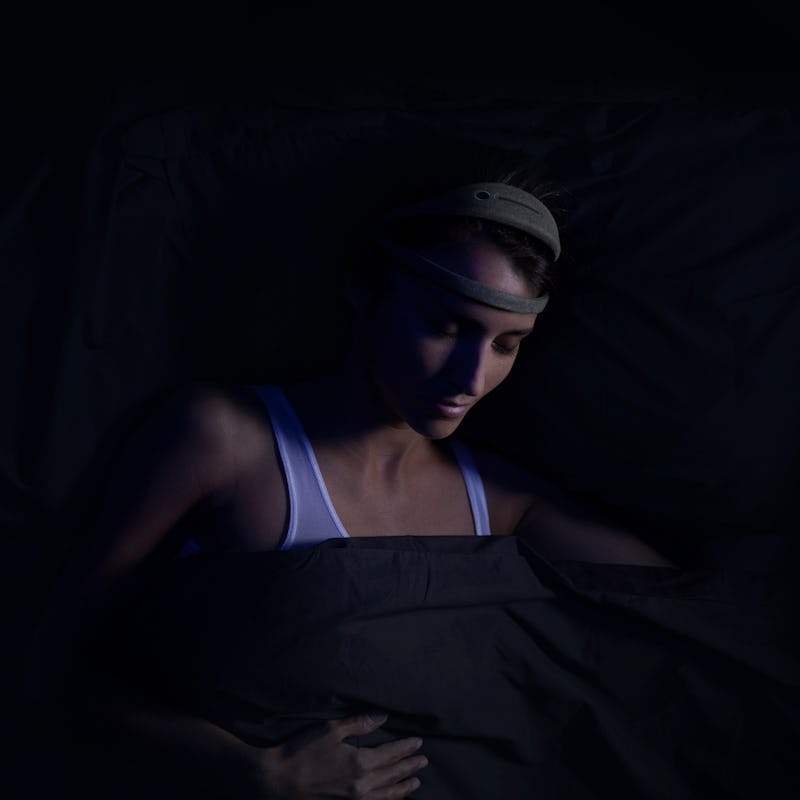The Dreem Headband Analyzes Your Brainwaves for a Better Night's Sleep
This new wearable scans your brain to help you sleep like a baby.

After a long and stressful day, nothing beats rolling yourself up in a blanket burrito and drifting off to sleep. But if you find yourself staring at the ceiling, thinking about all you need to do the next day instead of flying on unicorn-back through dreamland, you’re not alone.
According to a survey conducted by Statista in 2017, 19 percent of Americans reported having difficulty unwinding at night. This means they are losing out on precious hours of slumber. While honing your sleep habits over the course of a few weeks can help, you can also hack your way to sleep with a new wearable device from Dreem.
Dreem believes that sleeping well is not a luxury; it’s an absolute necessity. That’s why they’re on a mission to conquer sleep. Unlike most sleep trackers which merely guess about your sleep habits using movement and heart-rate cues, the Dreem headband actually scans your brainwaves and delivers feedback to help you fall asleep faster and get more restful sleep. The wearable has built-in EEG sensors to measure your brain activity, accelerometers to measure your tossing and turning, and pulse oximeters to measure your heart rate and oxygen intake.
When you’re ready to go to bed, Dreem gives you four different audio programs to help you relax and drift off. For those times you can’t stop the thoughts from racing through your mind, Dreem recommends the Cognition option, which plays a sequence of words designed to distract and quiet your mind. As the headband senses you are falling asleep, it will stop playing the words and then stop the background music once you are completely asleep.
The other options are similar but focus on either nature sounds (Ambiance), breathing exercises (Respiration), or guided body scans (Meditation). When the researchers at Dreem looked at how quickly people fall sleep using these programs, they saw that the average time dropped by 43 percent. Without the headband, it took the participants an average of 31 minutes to fall asleep, and with the headband, it took them an average of 18 minutes.
“Definitely a keeper. The Dreem band delivered beyond my expectations. For starters, it made very observable improvements to my sleep quality right when I needed it the most.”
- Thomas T.
“After 50 days it really seems to be working well. It’s nice to have feedback on what changes or supplements have an impact your sleep. Also seems the deep sleep simulations are getting more effective over time.”
- Greg E.
While you’re fast asleep, the sensors on the headband continue to monitor your brainwaves, looking for the sweet spot during your sleep cycle to stimulate slow-wave sleep, also known as deep sleep. This type of sleep helps you process memories and restore brain activity. When you are in the deep sleep stage, the headband will begin playing ‘pink noise’, which, according to researchers at Dreem, can help stimulate and enhance deep sleep.
And for those of you who have seen Inception a few too many times (like us), fear not! The sleep headband is offline when you are snoozing — no wifi or bluetooth — so your dreams are safe from tampering!
If you’re ready to hack your sleep cycle, you can order the headband from Dreem’s website today for $499.
This sponsored article was created independently from Inverse’s editorial team.